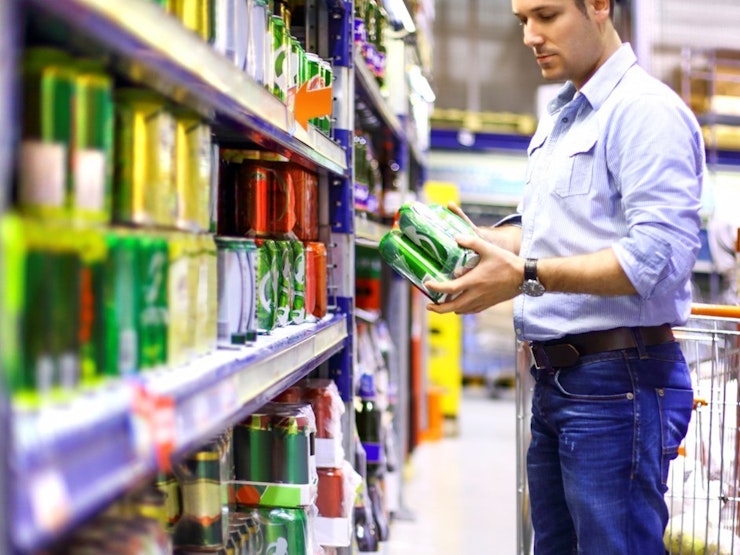Note: This report was funded and/or written by our predecessor organisation, the Alcohol Education Research Council (AERC).
12 February 2008
Researchers:
Barrie Gunter, Anders Hansen and Maria Touri of the Department of Media and Communication, University of Leicester.
Introduction
There has been growing concern about alcohol consumption among young people in the United Kingdom and other countries. This concern has been reinforced by large-scale surveys of national youth samples that have indicated that many teenagers experiment with alcohol and significant minorities drink on a regular basis. While some signs have emerged that more young people are starting to drink later, by the time they reach their mid teens around one in two consume alcohol at least occasionally. Furthermore, growing numbers of teenage drinkers periodically drink to excess to the point of drunkenness.
A number of factors have been identified as underpinning the onset of alcohol consumption among children and adolescents. These include the influences of parents and peer groups. The advertising of alcoholic products has also been identified as having a significant part to play in shaping youth drinking. One view is that it can create a climate in which alcohol consumption is regarded as normal and serves to trigger an interest in alcohol.
New Research
A multi-faceted enquiry reviewed research literature on the nature and impact of alcohol advertising, analysed alcohol advertising on television and print media in the UK before and after code of practice changes introduced at the start of 2005, analysed point-of-sale display of alcohol, and surveyed a sample of young adults about their alcohol drinking habits and exposure to alcohol advertising. It also conducted a review of alcohol advertising codes of practice within the United Kingdom.
Key findings
Advertising Expenditure Effects
Evidence from macro-level econometric analyses has been equivocal. While some analyses have indicated statistical links between the amount of expenditure on advertising and subsequent consumption levels, others failed to replicate these findings. When attempting to track relationships between advertising expenditure and volumes of product consumption over time, it has often been difficult to unravel which factor is the causal agent.
Advertising Ban Effects
Research on the effectiveness of advertising bans has generally found that such restrictions only work when they are either complete or at least comprehensive. Partial bans tend to be ineffective because advertisers react to restrictions upon advertising in one medium by increasing investment in advertising in other media. In the context of alcohol advertising, bans have so far been found to have limited impact upon per capita consumption of alcoholic drinks.
Advertising Exposure Effects
Exposure to alcohol advertising can raise familiarity with brands among young people, but whether it has a direct link to the onset of drinking is a more debatable point. Any effects that do occur as a result of exposure to advertising might be indirect rather than direct. Exposure to alcohol advertising can cause young people to think about drinking. Alcohol-related thoughts might eventually contribute towards a decision to start drinking. Evidence is less clear-cut on whether exposure to alcohol advertising invariably serves as a direct trigger young people to consume.
Nature of Alcohol Advertising
Advertising has frequently associated alcohol consumption with themes such as friendship and fun, and in the context of young, ‘cool’ characters hanging out in popular social scenes. Since the code of practice changes in 2005, the use of celebrities and themes of drinking and sexual success have virtually disappeared. Humour, though still present, is again more narrowly represented with the use of animation – following its known appeal to under-age drinkers – have largely disappeared. Only a few potential rule breaches or use of themes that stretched the spirit of revised codes were detected.
Point of Sale
An audit of product displays and in-store promotions in three types of retail outlet – off-licences, supermarkets and newsagent/convenience stores – found that supermarkets contained the most extensive and diverse forms of alcohol product displays and in-store promotions that were situated in different parts of the store. Other retails outlets tended to have limited displays and promotions that were also situated only at display sites and rarely elsewhere in the store. Supermarkets were also more likely than other alcohol-selling retailers to position alcohol advertising at child’s eye level. Floor level product displays for alcoholic beverages were more widely used by supermarkets than other store types.
Effects of Alcohol Advertising on Individual’s Drinking
Parental and peer group influences emerged more often than did advertising as significant predictors of young people’s reported overall frequency or amount of alcohol consumption. Advertising did not feature at all as a predictor of frequency of drinking. Exposure to cinema advertising was a negative predictor of frequency of getting drunk. This finding implied that regular cinema-goers are less likely to get drunk even though they experience higher levels of exposure to cinema-based alcohol advertising. Respondents who reported higher levels of exposure to television alcohol advertising, however, were more likely to report getting drunk.
Reported frequencies of consumption of major brands of cider and alcopop were both significantly predicted by reported exposure to televised alcohol advertising. No significant advertising exposure predictors emerged in respect of reported consumption of the most advertised brands of beer, wine or spirits.
Adherence to Codes of Advertising Practice
All alcohol advertisements in the UK must abide by the requirements of the advertising codes of practice published by the Office of Communications (for broadcast ads) and Advertising Standards Authority (for non-broadcast ads). At the beginning of 2005, revised codes of practice for alcohol advertising on television were issued that required advertisers to tighten up even further on the kinds of appeals they are permitted to use in promoting alcohol brands.
It was found that both television and print advertisements were found to be largely compliant with the advertising codes of practice in both periods under examination Overall, 40 violations were detected, 25 of which occurred in 2003-2004 and 15 in 2005-2006. The numbers of violations indicated the number of times a code was breached, rather than the number of advertisements that were found in breach, since certain advertisements contained more than one violation.
It emerged that the most commonly violated rule regarded the explicit or subtle link of the advertised brand with the success of a social occasion such as a wedding, (11.8.1(a2)); and the explicit or subtle link of the advertised brand with behaviour that could be potentially dangerous after consuming alcohol. Such behaviour included swimming, diving and use of dangerous machinery. It needs to be clarified that it largely remained unclear whether alcohol had been consumed before a certain type of behaviour/activity took place; however, this could still constitute violation of rule 11.8.1(h), as any such ambiguity should be resolved.
Other violated rules included the connection of the advertised brand with daring and aggressive behaviour (11.8.1(b) – 11.8.2(b)); connection of the advertised brand with sexual activity, seduction and enhancement of an individual’s attraction (11.8.1(c) – 11.8.2 (e)); and participation of people who appeared to be younger than 25 years old (11.8.2(a2)). It also emerged that the majority of violations were found in the Bacardi and Budweiser campaigns followed by Smirnoff and WKD.
Alcohol advertising is effectively regulated and advertisers seem mostly to comply with codes of practice. Many psycho-social factors predict alcohol consumption among young people, and advertising is not invariably a key factor. Nonetheless, while advertising may not be the most powerful predictor of overall drinking or drunkenness, more subtle relationships may exist between advertising exposure and consumption of specific categories of alcoholic drink. Although alcopops may be displaying signs of a waning market, cider consumption has grown dramatically. It may be no coincidence that the category of alcoholic drink that has shown the most significant growth in consumption also emerged here as the one for which the most significant link exists between advertising exposure and reported consumption.

